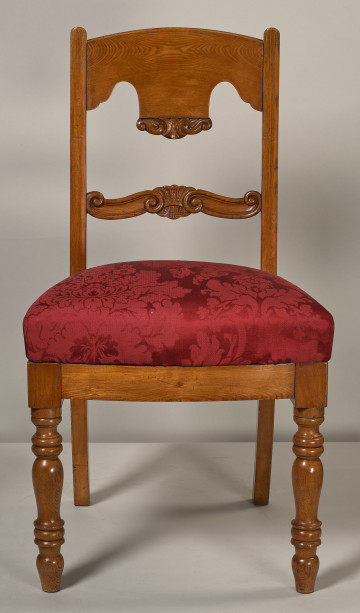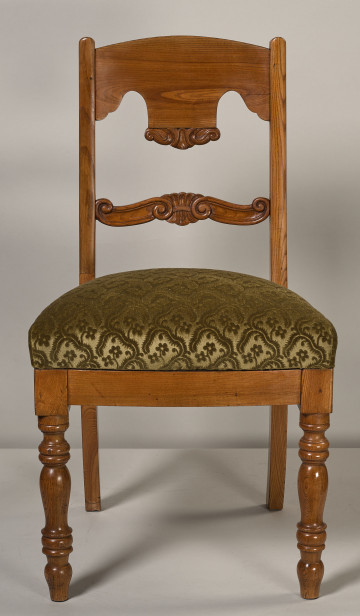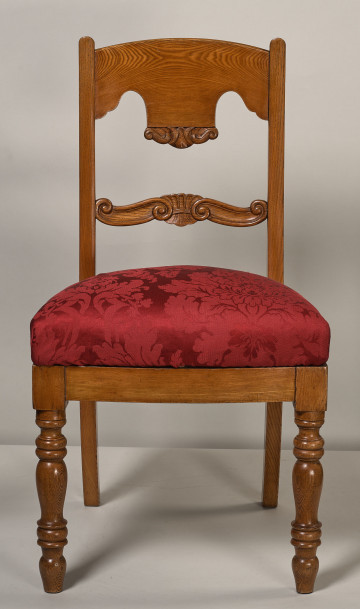
Eclectic chair
19th (?) century
Castle Museum in Łańcut
Part of the collection: Meble i wyposażenie wnętrz
A screen usually consists of several articulated wings. The piece serves as a movable wall used to enclose or divide a space. It is one of the most functional and handy appliances used in residential interiors. Its name comes from the Italian para vento, translated as “shield from the wind”. The French borrowed the term and popularised it under the name paravent. Screens originated in China. They probably appeared in Europe in the 16th century, when explorers’ and merchants’ expedition rekindled the fascination with the Far East. During the Baroque and Rococo eras, as interest in the broader culture of the Orient grew, so did the demand for Far Eastern handicrafts or their European imitations. In Europe, screens were most popular in the 18th and 19th centuries, and their style underwent transformations, adapting to the needs of current fashion. This can be seen, for example, in the French Regency and Rococo eras, which were imitated throughout Europe. In the presented piece, the wavy, uneven line of the screen’s top edge partially obliterates its structural frame, decorated with carved ornaments typical of the Rococo style. In the 19th century, when European art and crafts were dominated by a retrospective approach to bygone eras, the fashion for Rococo in a neostyle version returned periodically, as can be seen in the example presented. Teresa Bagińska-Żurawska https://orcid.org/0000-0002-9243-3967
Author / creator
Dimensions
height: 160 cm, width: 220 cm
Object type
Furniture and interior fittings
Technique
woodcarver
Material
fabric, paint, lime tree wood
Creation time / dating
Creation / finding place
Owner
Castle Museum in Łańcut
Identification number
Location / status

19th (?) century
Castle Museum in Łańcut

19th (?) century
Castle Museum in Łańcut

19th (?) century
Castle Museum in Łańcut
DISCOVER this TOPIC
National Museum in Lublin
DISCOVER this PATH
Educational path